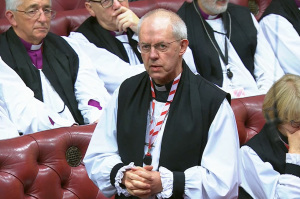Monk, Workers Shot in Monastery Attack in Egypt
Two people in critical condition, five others hurt, after assault by Egyptian military
CAIRO, Egypt – One monk and six church workers were shot and wounded last week when the Egyptian Army attacked a Coptic Orthodox monastery in order to destroy a wall monks had built to defend their property from raiders, sources said.
The attack with small arms, heavy machine guns and armored personnel carriers happened Wednesday afternoon (Feb. 23) at the Anba Bishoy Monastery in Wadi Al-Natroun, 110 kilometers (68 miles) north of Cairo. After a brief argument with monks and workers outside the monastery wall, soldiers opened fire on the crowd, sending them running for cover, sources said.
The soldiers then used armored personnel carriers to bulldoze the wall, they said, as the monks sang a prayer in unison, declaring, "God is merciful."
A monk who witnessed the attack said on condition of anonymity that the scene resembled "a war zone."
"It was a miracle nobody died," the monk added.
Seven people today remained in the Anglo American Hospital in Cairo, two of them in critical condition. Reporters were unable to talk to the wounded because soldiers have been posted in their hospital rooms.
The attack took place in the wake of the political riots that swept through Egypt beginning Jan. 25, culminating in the resignation of President Hosni Mubarak on Feb. 11. As the army and other security officials from around the country either shifted to Cairo or simply abandoned their posts, the Anba Bishoy Monastery had come under increasing attacks from raiders and criminals set free from prisons.
When the monks had asked for protection, the military told them to fend for themselves, according to public statements made by the monastery leadership. The monks then built a brick wall with a metal gate to control access to the monastery grounds. The army later claimed the monastery had not acquired the proper permits and issued a deadline for the wall to be torn down. The monks refused to demolish the wall, and the army moved in.
At least two monks were arrested in the attack but have since been released, according to monastery leaders.
The army denied conducting the attack, despite a video widely circulated on the Internet in which Egyptian soldiers can be seen firing AK-47 assault rifles and .50-caliber machine guns from atop U.S.-supplied M-113 armored personnel carriers. The same armored personnel carrier, joined by one other, then demolished the wall and the gate. It was unclear if soldiers were using standard bullets or "Less-Than-Lethal" munitions, commonly known as rubber bullets.
On the same day, the army also attacked the Anba Makarious Al Sakandarie Monastery in Al Fayoum, 130 kilometers (80 miles) southwest from Cairo. In much the same fashion, the army knocked down a wall the monks had built during the national demonstrations. The monks said they built the wall also to protect themselves from attacks. The army claimed the wall was built on land set aside for a nature preserve.
There have been other scattered incidents throughout Egypt in which anti-Christian persecution has been, at minimum, a contributing factor in the attack. On Feb. 17, in the village of El-Hathatah near Minya, 231 kilometers (144 miles) south of Cairo, a group of townspeople angered about construction at the Church of St. Georges pelted the congregation with bricks and rocks.
Hany Malak, a lay leader at the church, said the attack was terrifying.
"It was very scary for everybody, for the Christians who were in the church, and the ones who were in their homes," Malak said. "The ones in the church couldn't leave, and the ones who were in their homes couldn't get out. All were scared and tried to hide."
For years the small church held services with a large part of the congregation forced to stand outside under a tarp. After the forced resignation of Mubarak, the leadership of the church saw an opportunity to build a roof to replace the tarp. They applied for and got permission from both the village elders and the village mayor to build the structure, but as church members placed support beams for the roof, a group of Muslims attacked, Malak said.
The attacks shifted back and forth from different streets surrounding the church as members of the mob tried to force their way into the church buildings. A group of congregants fought them off, Malak said.
After several hours the village mayor, along with the head of the Samalout police force and several officers, came to the church and with great effort were able to move the crowd away, Malak said. Christians in El-Hathatah were concerned that after Friday prayers new riots would break out, but they never materialized.
Finally, the governor of Minya Province, Ahmed Diaa Al Deen, pledged that the church would be allowed to finish the roof, as long as everything was done legally. It was uncertain exactly what his comment would mean.
Five days before the El-Hathatah attack, on the morning of Feb. 12, gunmen broke into and then looted The Virgin Mary Church in El-Arish, located in the northern Sinai Peninsula. The looters escaped, so the motivation behind the attack – to intimidate Christians, or simple larceny – was unknown.
The attack was the second church attack in the Sinai in less than two weeks. On Feb. 5 someone set a fire inside a church building in Rafah, located on the border between Egypt and the Palestinian-controlled Occupied Territories. The church sustained minor damage and a large cross was stolen, local media reported.
During the same time, a gas station in El-Arish was reportedly torched, and at least one other building in the area was attacked, No one was hurt in any of the attacks.





























